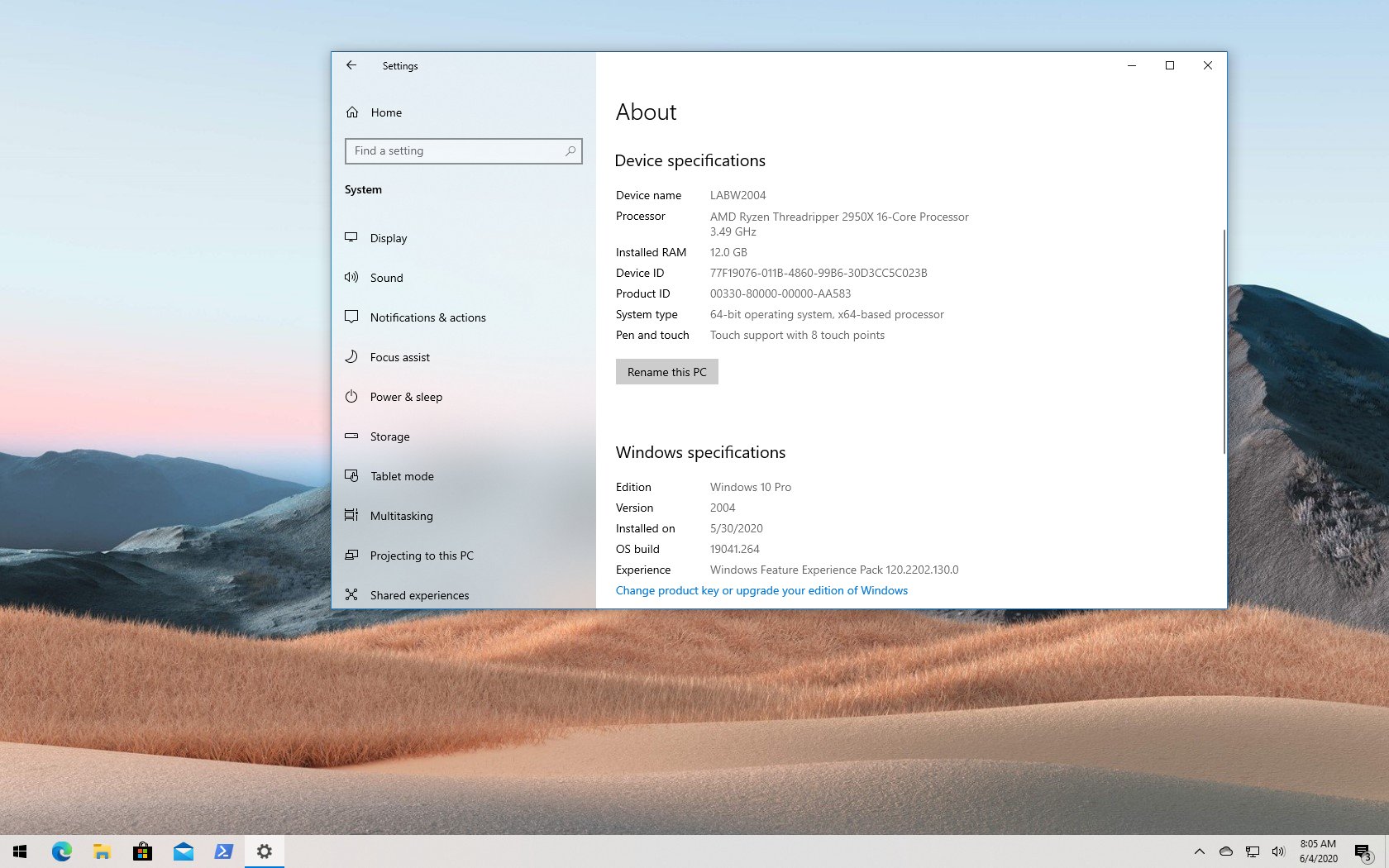
Although you can install Windows 10 on virtually any modest hardware configuration, knowing the minimum system requirements will help you to understand if the device is capable of handling the operating system. Windows 10 version 2004, May 2020 Update, has similar processor, memory, and storage minimum requirements as the previous version that is replacing (November 2019 Update), with the only difference that the new version now officially support newer processors from Intel and AMD.
When upgrading from one version of Windows 10 to the next, usually, there’s not differences in hardware requirements, but since version 1903, the operating system increased the minimum storage requirement to 32GB. However, this was only for new devices or if you’re trying to perform a clean installation of the 32-bit or 64-bit version. If the device has less than 32GB, and it’s already running an older version of Windows 10, then it’ll continue to upgrade without issues.
These are the system requirements for Windows 10 version 2004 and later:
| Windows 10 2004 hardware requirements | |
|---|---|
| Processor | 1GHz or faster CPU or System on a Chip (SoC) |
| RAM | 1GB for 32-bit or 2GB for 64-bit |
| Hard drive space | Existing installations: 16GB for 32-bit or 20GB for 64-bit Clean install or new PC: 32GB or larger |
| Graphics | DirectX 9 or later with WDDM 1.0 driver |
| Display resolution | 800×600 |
| Networking | Wi-Fi or Ethernet adapter |
In addition, starting with the May 2020 Update, Microsoft is updating the processor requirements to support the latest 10th Generation of processors from Intel and AMD Ryzen 4xxx series chips.
| Windows 10 2004 processor, storage, display support | |
|---|---|
| Processor features | Compatible with the x86 or x64 instruction set Support for PAE, NX and SSE2 Support for CMPXCHG16b, LAHF/SAHF, and PrefetchW for 64-bit OS installation |
| Intel | Up to 10th Generation Intel Processors (Intel Core i3/i5/i7/i9-10xxx) Intel Xeon W-12xx/W-108xx Intel Xeon SP 32xx, 42xx, 52xx, 62xx, and 82xx Intel Atom (J4xxx/J5xxx and N4xxx/N5xxx) Celeron Pentium |
| AMD | Up to AMD 7th Generation Processors (A-Series Ax-9xxx & E-Series Ex-9xxx & FX-9xxx) AMD Athlon 2xx processors AMD Ryzen 3/5/7/9 4xxx AMD Opteron AMD EPYC 7xxx |
| Qualcomm | Snapdragon 850 Snapdragon 8CX |
| Storage | Storage controllers must support booting using the Extensible Firmware Interface (EFI) and implement device paths as defined in EDD-3. Storage host controllers and adapters must meet the requirements for the device protocol used and any requirements related to the device storage bus type. Bus-attached controllers must implement the correct class/subclass code as specified in the PCI Codes and Assignments v1.6 specification. |
| Display | Depth of 32 bits on each output simultaneously. Minimum diagonal display size for the primary display of 7-inches or larger. |
If you’re upgrading from an older version of Windows 10, the new feature update should install in the same hardware configuration whether you use the Windows Update, Media Creation Tool, Update Assistant, or ISO file, since the requirements haven’t change. However, you should consider that Microsoft is rolling out version 2004 gradually and placing a temporary block on devices known not to be yet compatible due to known issues.
